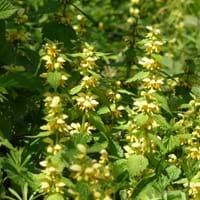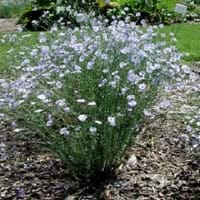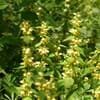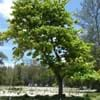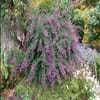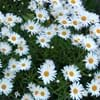Life Span
Perennial
Annual
Origin
Europe, Western Asia
Europe, Asia
Types
not available
Winged flax, Bristle flax, Fairy flax
Habitat
Forest margins
Cultivated Beds
USDA Hardiness Zone
4-8
4-8
Sunset Zone
2a, 2b, 3a, 3b, 4, 5, 6, 7, 8, 9, 10, 11, 14, 15, 16, 17, 18, 19, 20, 21, 22, 23, 24
2a, 2b, 3a, 3b, 4, 5, 6, 7, 8, 9, 10, 11, 13, 14, 15, 16, 17, 18, 19, 20, 21, 22, 23, 24
Habit
Mat-forming
Clump-Forming
Flower Color
Light Yellow
Blue, Sky Blue
Flower Color Modifier
Bicolor
Bicolor
Fruit Color
Not Available
Tan
Leaf Color in Spring
Green, Silver
Green, Blue Green
Leaf Color in Summer
Dark Green, Silver
Green, Blue Green
Leaf Color in Fall
Dark Green, Silver
Green, Blue Green
Leaf Color in Winter
Light Green
Light Green
Leaf Shape
Spreading mass
Narrow
Plant Season
Spring, Summer, Fall
Summer
Sunlight
Partial shade, Full Shade
Full Sun, Partial Sun, Partial shade
Growth Rate
Very Fast
Fast
Type of Soil
Clay, Loam, Sand
Loam, Sand
The pH of Soil
Neutral
Neutral, Alkaline
Soil Drainage
Average
Well drained
Bloom Time
Late Spring, Early Summer, Summer
Early Summer, Summer
Tolerances
Drought
Drought
Where to Plant?
Ground
Ground
How to Plant?
Runners
Seedlings
Plant Maintenance
Medium
Medium
Watering Requirements
Average Water Needs
Average Water Needs, Requires watering in the growing season
In Summer
Lots of watering
Lots of watering
In Spring
Moderate
Moderate
In Winter
Average Water
Average Water
Soil pH
Neutral
Neutral, Alkaline
Soil Type
Clay, Loam, Sand
Loam, Sand
Soil Drainage Capacity
Average
Well drained
Sun Exposure
Partial shade, Full Shade
Full Sun, Partial Sun, Partial shade
Pruning
cut main flower spike
Midseason Pruning, Prune in fall, Remove damaged leaves, Remove dead branches, Remove dead leaves
Fertilizers
All-Purpose Liquid Fertilizer, Fertilize in early spring, Fertilize the soil instead of direct applying
All-Purpose Liquid Fertilizer
Pests and Diseases
Red blotch
Red blotch
Plant Tolerance
Drought
Drought
Flower Petal Number
Single
Single
Foliage Texture
Medium
Fine
Foliage Sheen
Matte
Matte
Attracts
Bees, Insects
Bees, Butterflies, Flies
Allergy
Not Available
Cyanide poisoning
Aesthetic Uses
Not Used For Aesthetic Purpose
Showy Purposes
Beauty Benefits
Not Available
Good for skin
Environmental Uses
Air purification
Air purification
Medicinal Uses
Not Available
Antirheumatic, Carminative, Emollient, Ophthalmic, Poultice, Stomachic
Part of Plant Used
Not Available
Flowers, Seeds
Other Uses
Employed in herbal medicine
Cosmetics, Fibre, For making oil, Used in paper industry
Used As Indoor Plant
No
Not Available
Used As Outdoor Plant
Yes
Yes
Garden Design
Foundation, Groundcover, Mixed Border, Rock Garden, Wall
Mixed Border, Rock Garden, Wall, Wildflower
Botanical Name
LAMIASTRUM galeobdolon
LINUM perenne
Common Name
Yellow Archangel
Perennial Flax, Blue flax, Alpine flax
In Hindi
पीला महादूत
Blue Flax Plant
In German
Yellow Archangel
Blaue Flachspflanze
In French
Archange Jaune
Bleu lin Plante
In Spanish
Arcángel amarillo
Planta de lino azul
In Greek
κίτρινο Αρχάγγελος
Μπλε Λίνο Φυτών
In Portuguese
Arcanjo amarelo
Planta do linho azul
In Polish
żółty Archanioła
Niebieski roślin lnu
In Latin
Yellow Archangeli
Blue linum Planta
Phylum
Anthophyta
Magnoliophyta
Class
Equisetopsida
Magnoliopsida
Family
Lamiaceae
Linaceae
Clade
Angiosperms, Asterids, Eudicots
Angiosperms, Eudicots, Rosids
Tribe
Not Available
Not Available
Subfamily
Not Available
Not Available
Number of Species
Not Available
Importance of Yellow Archangel and Blue Flax
Want to have the most appropriate plant for your garden? You might want to know the importance of Yellow Archangel and Blue Flax. Basically, these two plants vary in many aspects. Compare Yellow Archangel and Blue Flax as they differ in many characteristics such as their life, care, benefits, facts, etc. Every gardener must at least have the slightest clue about the plants he wants to plant in his garden. Compare their benefits, which differ in many ways like facts and uses. The medicinal use of Yellow Archangel is Not Available whereas of Blue Flax is Antirheumatic, Carminative, Emollient, Ophthalmic, Poultice and Stomachic. Yellow Archangel has beauty benefits as follows: Not Available while Blue Flax has beauty benefits as follows: Not Available.
Compare Facts of Yellow Archangel vs Blue Flax
How to choose the best garden plant for your garden depending upon its facts? Here garden plant comparison will help you to solve this query. Compare the facts of Yellow Archangel vs Blue Flax and know which one to choose. As garden plants have benefits and other uses, allergy is also a major drawback of plants for some people. Allergic reactions of Yellow Archangel are Not Available whereas of Blue Flax have Cyanide poisoning respectively. Having a fruit bearing plant in your garden can be a plus point of your garden. Yellow Archangel has no showy fruits and Blue Flax has no showy fruits. Also Yellow Archangel is flowering and Blue Flax is flowering. You can compare Yellow Archangel and Blue Flax facts and facts of other plants too.
